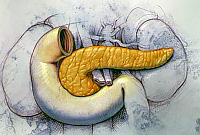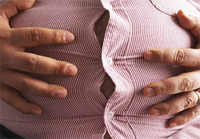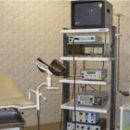Patient comes to a doctor. It seems nothing hurts, but there is a bloating, a feeling of gravity, a chair is sometimes disturbed. «This is your dysbacteriosis, "the doctor speaks confidently in the clinic," you have a balance between useful and harmful intestinal bacteria».
Content
Useful connections
Man appears without microflora
intestine. However, already in the first hours after birth in the body, and
more precisely, in the intestine, fall «illegal migrants». They live without seeing
Lights in scary cramped, like migrant workers from Tajikistan, dig
in… In general, make dirty work. And this collaboration suits both
Parties.
Bacteria do not just eat us and clog the intestine
«slags». They work: stimulate immunity, participate in digestion
and neutralizing toxins, synthesize substances supporting
Introductory-electrolyte balance in the body, and group vitamins in and to.
Few
Togo microflora participates in the metabolism of bile acids and cholesterol,
And when violating this process, stones in the bustling bubble may appear.
IN
Family not without a freak – about 15% of intestinal microorganisms are
pathogenic (harmful), and 85% of normal bacteria prevent them
reproduction and introduction of new pathogenic outside.
We can't do without bacteria, and they without us. And when this symbiosis is broken… Actually, when he is broken?
Bacteria
Small but very capricious creatures. Do not endure bad ecology,
dirty water, preservatives, irregular nutrition, hard diets. Even
Our stress at work is immediately reflected on them. What to say about
Diseases: Almost all diseases of the gastrointestinal tract
lead to dysbacteriosis of varying severity.
Besides,
a large test, both for us and for our bacteria, are
Surgical operations, radiation therapy, immunodeficiency states. BUT
uncontrollable reception of the antibiotics of a wide range of action, and not
exiting hydrocolonotherapy modes, lead to the present
Bacterial Holocaust.
As a result, violation
micoecology boomerang beats the body. This is negative
affects the well-being of a person and on the effectiveness of treating it
Diseases. Often the disturbed state of microflora caused by the reception
drugs, reduces the efforts of the doctor no. It turns out a closed circle.
When to check for dysbacteriosis?
If
You can't go on a date, because you do not get out of the toilet. If
You swear yourself for having got ready in the Georgian cafe. If you go away from
dairy products. If you call a familiar doctor and ask,
what else to take, because nothing helps. If you can not
kiss because of the smell of mouth. If you have little height, and you are not
Like girls…
In 4 out of 5 cases, dysbacteriosis occurs
Due to diseases of the digestive system: peptic disease, cholecystitis,
hepatitis, pancreatitis, irritable sind syndrome and t. D. Other
in words, research on dysbacteriosis must be carried out at any
Gastroenterological disease.
Other reasons for
Surveys: a long continuous subfebrile temperature (up to
37.90), allergic reactions (including food intolerance),
Rash on the skin (and in this may also be partly the obey of bacteria!),
as well as chemotherapy and more than a seven-day course of antibiotic therapy.
How to check for dysbacteriosis?
IN
international classification of diagnosis diseases «Dysbacteriosis» – not
exist. Microflora violation – This is always a consequence of the main
Pathology. Therefore, first of all, it is necessary to reveal and accurately
establish a disease that led oh to violation of microflora composition
oh to violation of microflora composition
intestines and only in the second – do, directly,
Dysbacteriosis.
By the way, the proposed treatment of the main
Diseases in many cases lead to self-restoration of intestinal
Microbiocenosis.
Methods of diagnosis of dysbacteriosis
Most
popular and common method used for
Diagnosis of dysbacteriosis – Bacteriological research (author
Methodik — Epstein Litvak and Wilshanskaya, 1970). On the one hand, it is up to
It is considered relatively accurate, on the other – He is very laborious.
For the patient, the purpose of such a study means that the analysis should
be collected no more than two hours before the study, and for
Laboral doctors – that bacteria from the material for four days
We will have to grow on nutrient media with daily control.
The work is very painstaking, because the violation of the regime at any stage
leads to the emergence of incorrect results, which often happens.
Cons of bacteriological research
- In the intestine there are more than 500 different microorganisms, so
Estimate the condition of such a variety of microflora is very difficult. IN
laboratories are determined by 20-25 types of bacteria, which does not give full
Pictures of microflora states.
- In bacteriological analysis, mainly determined
Microflora in the list of intestines – the one that goes on it to transit.
That is, those bacteria are detected that did not fit in the body. At
This is the main microflora that is required to determine when
Dysbacteriosis – Prieuchenic. It is living in the cloth mucus
Intestinal microorganisms participate in the exchange, synthesize vitamins and t.
D. It is with them that disabilities are connected with dysbacteriosis.Thus
way indicators obtained in bacterial analysis only
confus the doctor because they do not reflect the true state
Modehroflora intestine. Bacteriological analysis is more useful
In infectious diseases, rather than in dysbacteriosis.
- Ideally, bacteriological analysis is recommended not to conduct
less than three times to exclude accidentally hit the body (or on
Petri Cup with Doctor's Hands) Microbes.At the turn of the XX-XXI centuries
Scientists thought about the alternative to bacterial research and
We developed four new methods of diagnosis of dysbiosis:
Biochemical, high-voltage electrophoresis on paper, ionic
Chromatography and Research with Non-Prosecable Name –
Chromato mass spectrometry.Currently developed even
Molecular Methods (Author's Methodology — Tannock G., 1997). but
the overwhelming majority of them can be said that they did not come out of
walls of NII. They were not widely used in diagnostics
Dysbacteriosis due to its high cost, complexity or small
informativeness.
Approximate cost of analyzes in Moscow
- Bacteriological feces analysis: from 800 rubles
- Biochemical express analysis of feces: from 300 to 1500 rubles
century he was improved and brought to mind so much that his
included in clinical practice.
Dysbacteriosis (author's method — Ardatskaya M.D., 2000) is based on
Definition of microflora products – so-called short-chained
fatty acids (CZHK), and adequately reflects the state of microflora
intestine.
His main difference from bacteriological research in
that he studies the vital activity of the most informative
Prieucian intestinal microflora. On biochemical analysis, determining
the ratio of metabolites of various bacteria, the doctor can reveal not
only dysbacteriosis itself, but also diseases of the gastrointestinal tract,
who caused it.
Biochemical express analysis
done within a few hours, and the collection of material does not require
Patient of such a college as with a bacterial method (analysis can
Be taken at a convenient time, and then stored in the freezer).
WITH
Every year this method of diagnosis of dysbacteriosis becomes more and more
Popular. This is talking about at least the fact that many laboratories
abandoned bacteriological analysis, and the cost
Biochemical Analysis of the CZC in commercial medical centers
significantly increased.










